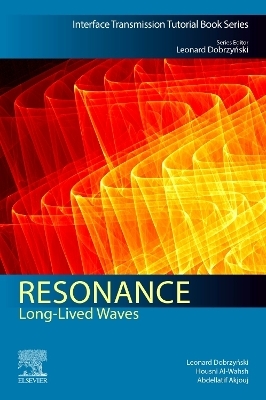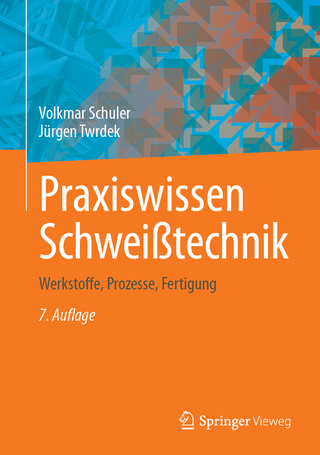
Resonance
Elsevier - Health Sciences Division (Verlag)
978-0-443-19144-2 (ISBN)
This book is suitable for materials scientists and engineers in academia and R&D, and may also be appropriate for applied physicists.
Léonard Dobrzyński is Emeritus Research Professor at CNRS, Lille University, France. His research interests focus on interface science, phononics, magnonics, and resonance. Housni Al-Wahsh is Professor of Theoretical Physics and Head of the Engineering, Mathematics, and Physics Department, Faculty of Engineering, Benha University, Cairo, Egypt. He is primarily interested in the physical properties of electronic, plasmonic and magnonic crystals. Abdellatif Akjouj is Professor at the University of Lille in France. His scientific activities deal with theory and modelling of wave propagation and elementary excitations in nanostructured materials, more particularly: nanoplasmonics, photonics, magnonics, phononics and optomechanics.
Preface xi
Acknowledgments xiii
1 State phase, rules, and theorems 1
1.1 Introduction 1
1.2 Finite, semi-infinite, and infinite systems 2
1.3 State and resonance 2
1.4 State phase 3
1.4.1 State phase shift 4
1.4.2 General state phase 5
1.4.3 Discrete final states 6
1.4.4 Bulk state phase shift 7
1.4.5 Comments 7
1.5 General rules and theorems 8
1.5.1 Eigenfunction continuity rules 8
1.5.2 General theorems 9
1.6 Outlook 9
References 10
2 Photonic open loops 11
2.1 Introduction 11
2.2 Open loops 12
2.2.1 Open-loop basic elements 12
2.2.2 One finite open loop 17
2.2.3 Two finite open loops 20
2.2.4 N finite open loops 25
2.3 Comb systems 30
2.3.1 A finite comb system with two teeth and three teeth at its two ends 31
2.3.2 A finite comb system with N teeth at M equidistant interface points 35
2.3.3 Long-lived resonances: comb with two teeth per port 38
2.4 Outlook 51
References 52
3 One photonic closed loop 53
3.1 Introduction 53
3.2 One closed loop and stubs 53
3.2.1 Basic closed-loop elements 53
3.2.2 One closed loop L and one stub L3 55
3.2.3 One closed loop L and several stubs 70
3.3 Simultaneous cross transmissions and disentanglement 79
3.4 Outlook 79
Acknowledgments 79
References 79
4 Two photonic closed loops 81
4.1 Introduction 81
4.2 Two tangent closed loops 81
4.2.1 General results 81
4.2.2 Two identical tangent loops L 83
4.2.3 Two tangent closed loops L1 and L2 86
4.3 Two tangent closed loops and stubs 89
4.3.1 Two closed loops L1 and L2 and two stubs L1/4 and L2/4 89
4.3.2 Two closed loops L +δ and L −δ and two stubs L/4 +δ/4 and L/4 −δ/4 93
4.3.3 Two closed loops L +δ1 and L− δ1 and two stubs L/2+ δ2 and L/2 −δ2 96
4.4 Outlook 98
References 99
5 Photonic two-port closed loop 101
5.1 Introduction 101
5.2 Closed-loop states 102
5.3 Final system states 104
5.3.1 BIC and SIBIC states 104
5.3.2 Bulk state phase shift and state densities 105
5.4 Transmission 108
5.4.1 The transmission coefficient and the hybrid long-lived resonances 108
5.4.2 Transmission phase and phase time 111
5.5 States and transmission 113
5.6 Stub hybrid resonances 115
5.6.1 A general system 115
5.6.2 Identical stubs L3 = L4 117
5.7 Cross-transmission 125
5.7.1 Cross-transmissions for any symmetric two-port system 125
5.7.2 Cross-transmissions for the two-port closed loop 125
5.7.3 Stub improved cross-transmissions 129
5.8 Outlook 129
Acknowledgments 130
References 130
6 Photonic spheres 133
6.1 Introduction 133
6.2 States of a two interface point sphere 134
6.3 N closed loops: two tangent interface points and one port 135
6.3.1 BIC and SIBIC states 136
6.3.2 Long-lived transmission resonances in function of N 136
6.4 Long-lived transmission resonances for N = 2: one port 137
6.4.1 Two closed loops of length L 137
6.4.2 Two closed loops L1 = L +δ, L2 = L −δ and stubs L1/4, L2/4 138
6.4.3 Two closed loops (4 different parts): one L/4 stub 142
6.4.4 Two closed loops (4 different parts): stubs L/4 and L/8 144
6.5 N closed loops: two tangent interface points and two ports 145
6.5.1 BIC and quasi-SIBIC states 147
6.5.2 Long-lived transmission resonances as functions of N 148
6.6 Long-lived transmission resonances for N = 2: two ports 149
6.7 Outlook 152
References 152
7 Photonic triangular pyramid 153
7.1 Introduction 153
7.2 Triangular pyramid states 154
7.2.1 Response function elements 154
7.2.2 States of the pyramid 155
7.3 The pyramid with two leads: one port 156
7.3.1 BIC and SIBIC states 156
7.3.2 Transmission, transmission phase, and state phase shift 157
7.3.3 The one port long-lived resonances 160
7.4 The pyramid with two leads: two ports 167
7.4.1 BIC and SIBIC states 169
7.4.2 Transmission, transmission phase, and state phase shift 169
7.4.3 The two-port long-lived resonances 174
7.5 Outlook 181
References 182
8 Square pyramid: one summit port 183
8.1 Introduction 183
8.2 Square pyramid states 184
8.2.1 Response function: interface elements 185
8.2.2 States of the square pyramid 186
8.3 The pyramid with one summit port 187
8.3.1 BIC and SIBIC states 188
8.3.2 Transmission, state phase shift, and VADOS 188
8.3.3 Transmission phase and phase time 191
8.3.4 The long-lived resonances 193
8.4 State and particle shifts, collapses, and sensing 199
8.5 Outlook 202
References 203
9 Generalizations 205
9.1 Introduction 205
9.2 Other simple system geometries 206
9.2.1 Open-loop chains 206
9.2.2 Closed-loop chains 206
9.2.3 Hexagons 206
9.2.4 Squares and cubes 207
9.2.5 Square pyramids 207
9.2.6 Many-port systems 207
9.3 Other generalizations 207
9.3.1 Composite material systems 207
9.3.2 Long-wavelength electronic waves 208
9.3.3 Plasmonic waves 209
9.3.4 Elastic waves 209
9.3.5 Polaritonic waves 209
9.3.6 Spin waves 209
9.3.7 Atomic and continuous material edge states 209
9.3.8 Simulations and state number conservations 209
9.3.9 Exact models versus small deformation ones 210
9.3.10 The attenuation effects 210
9.4 Outlook 210
References 210
Index 213
| Erscheinungsdatum | 20.02.2023 |
|---|---|
| Reihe/Serie | Interface Transmission Tutorial Book Series |
| Verlagsort | Philadelphia |
| Sprache | englisch |
| Maße | 152 x 229 mm |
| Gewicht | 450 g |
| Themenwelt | Technik ► Maschinenbau |
| ISBN-10 | 0-443-19144-1 / 0443191441 |
| ISBN-13 | 978-0-443-19144-2 / 9780443191442 |
| Zustand | Neuware |
| Informationen gemäß Produktsicherheitsverordnung (GPSR) | |
| Haben Sie eine Frage zum Produkt? |
aus dem Bereich


